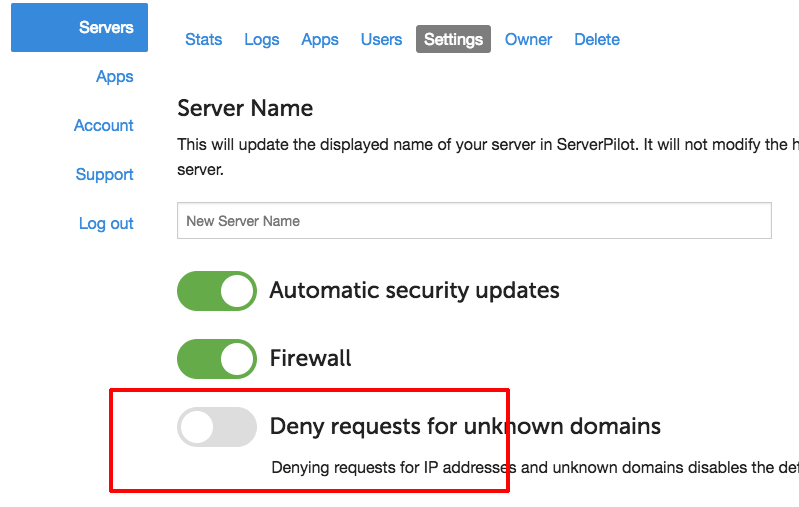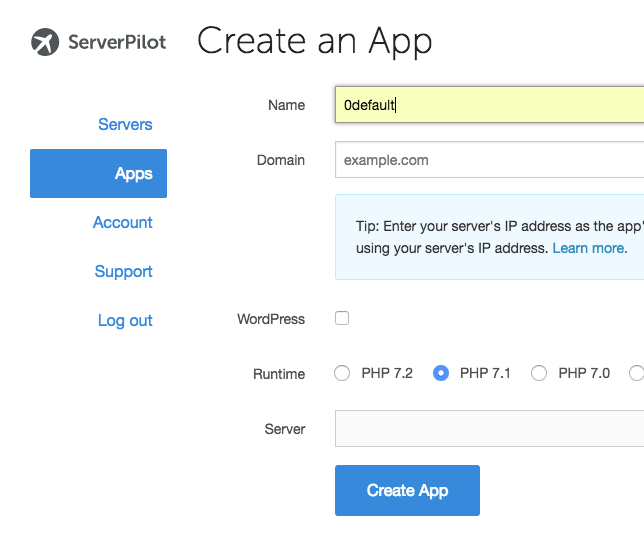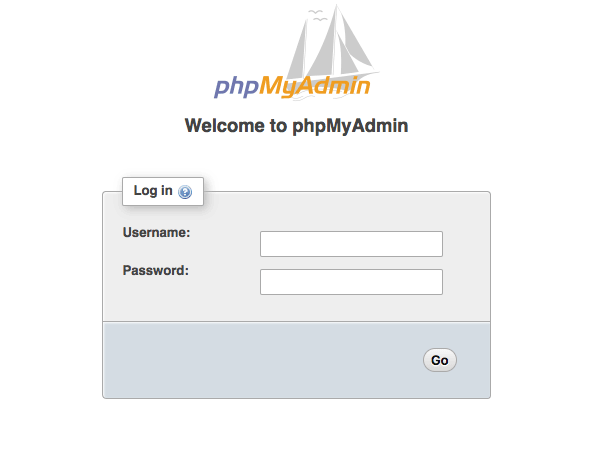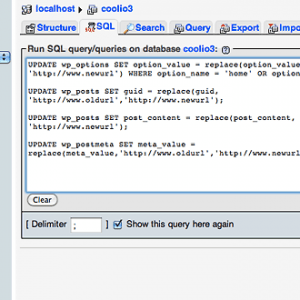By default when you set up a ServerPilot instance no GUI app is installed for MySQL interaction, ServerPilot recommend using Adminer which has a similar interface to phpMyAdmin and sits as a standalone single php file which you can use for individual database users.
This guide however goes through using phpMyAdmin instead and using it as the root user to see all databases.
Create Default App in ServerPilot
First create the default app in ServerPilot, which is like a catch all domain for domains not on your server but requests go to it.

Disable the ‘Deny requests….’

Create the default app as ‘0default’. Do it using the System User ‘serverpilot’, if you have a paid plan (it is only the user’serverpilot’ on the free plan.)
Install phpMyAdmin
SSH in as the ‘serverpilot’ user.
cd ~/apps/0default wget https://files.phpmyadmin.net/phpMyAdmin/4.7.9/phpMyAdmin-4.7.9-english.zip unzip phpMyAdmin-4.7.9-english.zip mv phpMyAdmin-4.7.9-english public/phpmyadmin

Now the phpMyadmin is in the 0default web root folder accessible via the IP address or server hostname if set up.
After this you can secure access to phpMyadmin by adding a .htaccess file with rules to allow only designated IP addresses.
AuthUserFile /dev/null AuthGroupFile /dev/null AuthName "Password Protected Area" AuthType Basic order deny,allow deny from all # whitelist home IP address allow from xxx.xxx.xxx.xxx
Get the MySQL root Password
Now you need to get the mysql root password, basically as a root user log in via SSH to your instance and run…
sudo cat /root/.my.cnf
And you’ll get the password.
Set phpMyAdmin Session Time
You can extend the session time of your phpmyadmin interaction by copying the config file, so as the serverpilot user…
su serverpilot
cp 0default/public/phpmyadmin/config.sample.inc.php config.inc.php
Add in the new file…
$cfg['LoginCookieValidity'] = 86400; // 1 day
Also add in a 32 hash secret for $cfg[‘blowfish_secret’]):
Create a new file .user.ini to match the time for PHP with the following
session.gc_maxlifetime = 86400
Backing Up MySQL Automatically
You can use the AutoMySQLBackup which backs up your databases daily, weekly and monthly, so as root …
sudo apt-get install automysqlbackup
The default location for storing the backups is
/var/lib/automysqlbackup
You can change this – by editing – /etc/default/automysqlbackup
So you can set and forget but also run manually with….
automysqlbackup
References—
Tutedepot
ServerPilot KB default app
ServerPilot KB MySQL Backup
ServerPilot KB MySQL Root User
automysqlbackup








